
“Some people want it to happen, some wish it would happen, others make it happen.”
—Michael Jordan

Illustration credit: Drawlab19/Shutterstock
Global brand builders are pioneers, forging paths into new territories to build the foundation for strong brands to grow. Long-term success is ultimately judged by the ability to create high-functioning, motivated teams—teams that are inspired to build something bigger than themselves and bring your strategy to life on the ground.
Sun Tzu wrote Art of War during the 5th century BC during a time of constant battles, upheaval, and uncertainty. One of Sun Tzu's famous quotes about how to win in battle reads, “He will win whose army is animated by the same spirit throughout all its ranks.”1 The implication for global brand builders is that we can't forget the needs of our teams and what motivates them as we work on satisfying the needs of our consumers.
I began my marketing career at General Mills as an assistant brand manager working on adult breakfast cereals in North America. At that time, the brands I managed were all well established. Looking back, it seems strange how little I actually interacted with the sales team. Back then, brand managers at traditional CPG companies often worked in silos, developing marketing plans and products that sales teams would then be responsible for pitching to retailers. Later, I came to realize that this way of working was only made possible because General Mills had an established, well-defined structure for managing domestic brands.
When I started my first assignment overseas, I found that those systems and guardrails didn't exist anymore. There were no routine things being done on a routine basis. Because I was launching new brands into new categories in developing markets, the teams I managed didn't have the same contextual experience, and the environment we were operating in was completely different. As a result, I found I needed to work much closer with my cross-functional teammates.
Along the way, I learned that you can have the best product performance, with the best positioning, at the best price, but if your cross-functional team doesn't truly understand your brand, you will fail. That means that marketing, sales, finance, and product development all need to be on the same page. Additionally, in international environments, your stakeholders can be very diverse, which makes it necessary to keep your communication simple and easy to understand.
Before your message can inspire and rally your team to execute, your message needs to be on strategy, memorable, and presented in a format that can be easily adapted to ensure it remains relevant for local audiences (see Figure 8.1).
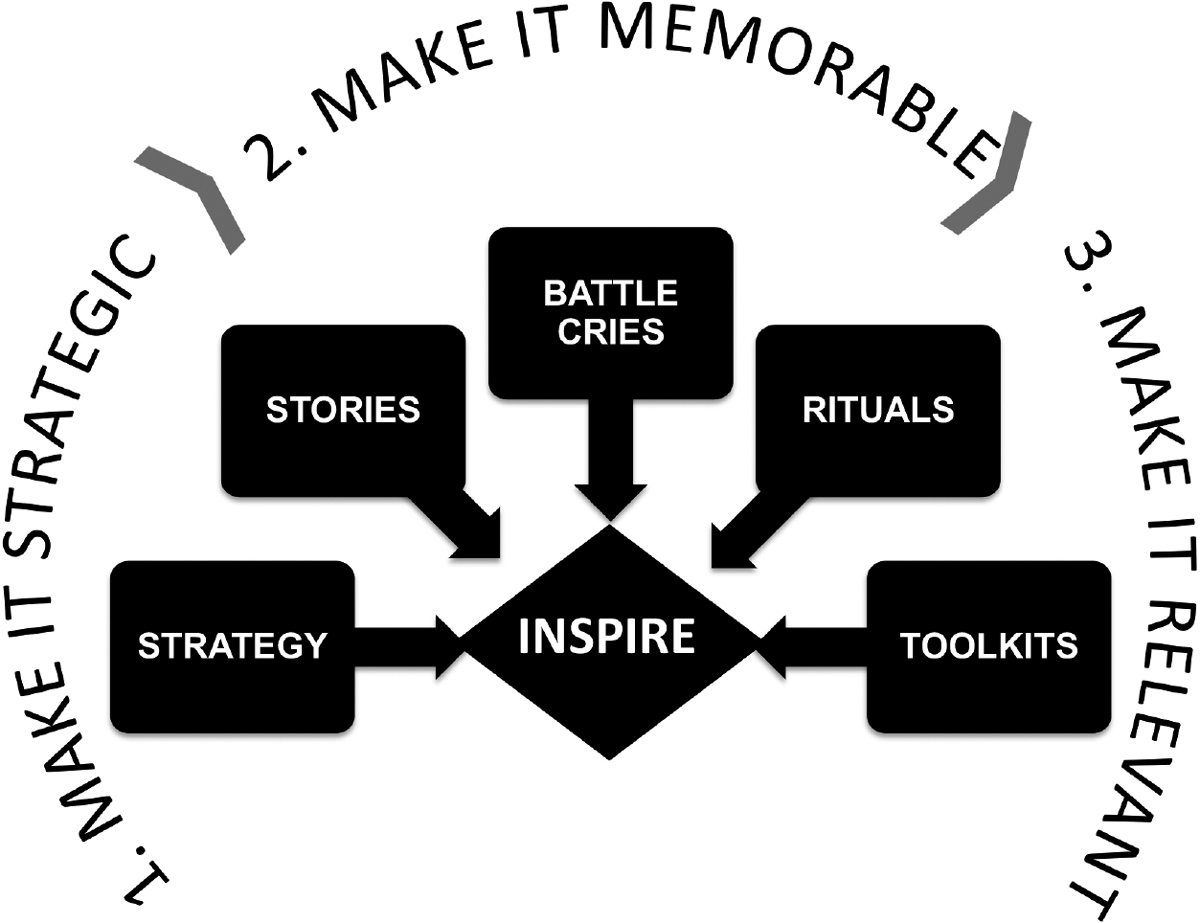
Figure 8.1. Inspirational communication framework.
When you want your brand to be understood, simply using plain language and vocabulary is not enough to get the job done. To ensure relevancy, make sure your communication is strategically grounded.
I recommend using the Target, Key Insight, Positioning, and Reason to Believe sections of the Lean Brand Canvas (see Figure 4.5 on page 61) as a communication brief. Then, evaluate your proposed communication against the “brief” to make sure your message is on strategy.
Your brand's stakeholders will eventually need to become advocates for your brand, because when you send them out into the world to inspire others, it's their version of the brand story that needs to connect with the end-users. So, make sure everyone on your team clearly understands the target. A good way to accomplish this is to ground your brand story by acknowledging who your target audience is up front. This will also help your target audience believe that the brand really understands them.

Figure 8.2. Moleskine Chinese artist special edition on display at a Moleskine store in China. Photo credit: Amy Hsu
Moleskine is an Italian brand that positions its popular notebooks as a platform for creativity and often collaborates with well-known creative personalities to reinforce its positioning (see Figure 8.2 on page 206). Moleskine begins its brand story by connecting the brand with artists and thinkers.
The Moleskine brand was created in 1997, bringing back to life the legendary notebook used by artists and thinkers throughout the past two centuries, such as Vincent van Gogh, Pablo Picasso, Ernest Hemingway, and Bruce Chatwin.2
HSBC is one of the leading international banking and financial services organizations in the world. For years, the brand called itself “The world's local bank” (see Figure 8.3). More recently, it has focused on a message of helping customers from all over the world “realize their ambitions.” HSBC begins its brand story by immediately talking about its international customers.
HSBC was born from one simple idea: a local bank serving international needs. In March 1865, HSBC opened its doors for business in Hong Kong, and today they serve around thirty-eight million customers worldwide in sixty-seven countries and territories.3
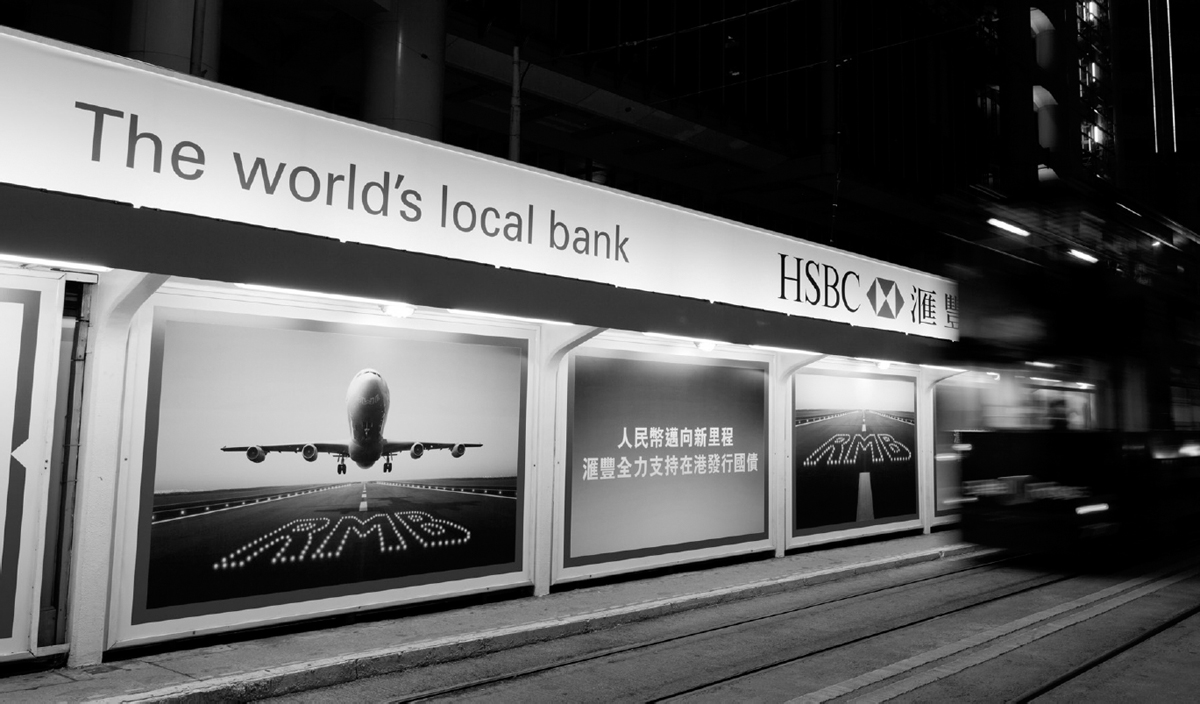
Figure 8.3. HSBC outdoor advertisement in Hong Kong. Photo credit: winhorse/iStock by Getty Images
The brands we love change our lives for the better. However, for a brand to actually change lives, it needs to address real perceptions and problems consumers face. When using the Lean Brand Canvas, the term “key insights” includes accepted consumer beliefs (ACB)—genuine consumer perceptions of which brand builders can take advantage when creating solutions.
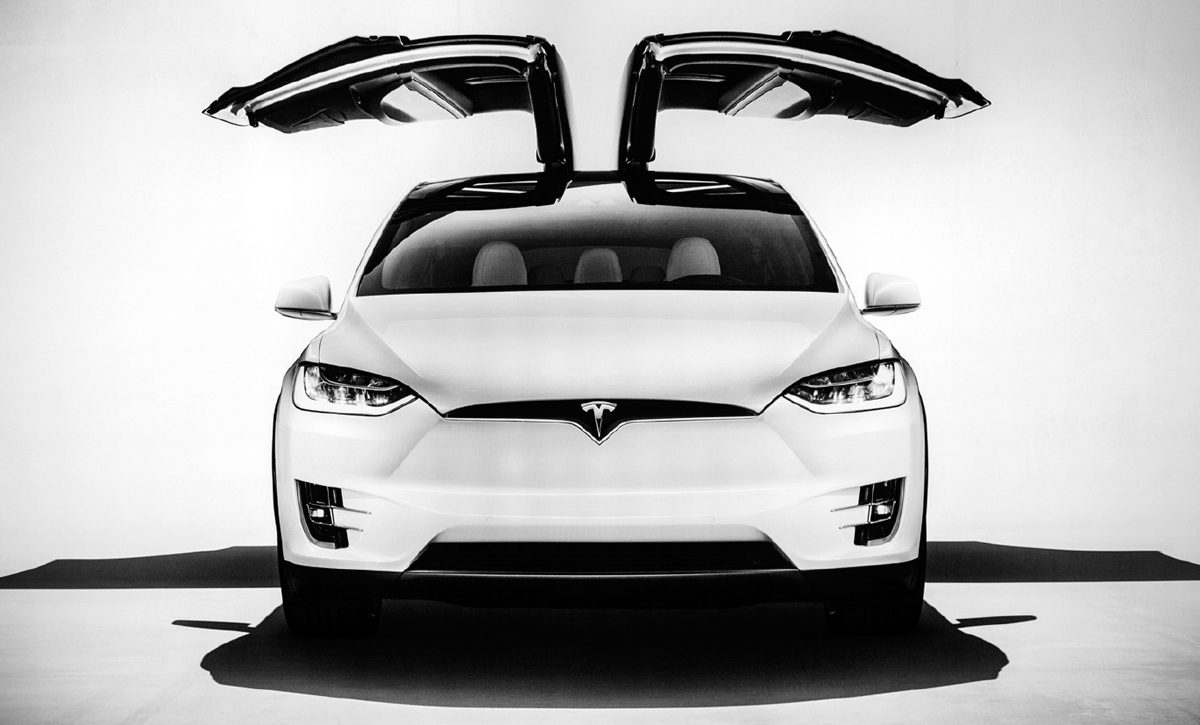
Figure 8.4. Tesla Model X. Copyright: Franz1212 | Dreamstime
Tesla is disrupting the automobile industry with cars that are simultaneously fast, sexy, and eco-friendly. The brand surprises consumers by leveraging an accepted consumer belief that electric cars must be boring to drive. Tesla is able to break through the competitive noise by surprising drivers. When you drive a Tesla, you don't have to compromise. You can own an eco-friendly vehicle that is both gorgeous and fun to drive. A survey by Gold Eagle Automotive Supplies asked two thousand people in the United States to reveal their dream car. The survey results showed the number-one choice for men and Millennials was Tesla.4 Tesla's Model 3 won Automobile Magazine's 2018 Design of the Year award. According to Robert Cumberford, the magazine's automotive design editor, “The Model 3 reminds us of classic Pininfarina designs of the 1960s: simple and straight-forward, perfectly proportioned with minimal extraneous detailing” (see Figure 8.4 on page 208).5
In-N-Out Burger is an American west-coast-based burger chain known for its quality. You won't find any freezers, heat lamps, or microwaves in the stores. In-N-Out butchers its own beef, bakes its own buns, and only makes burgers, fries, and shakes (see Figure 8.5). The brand leverages an accepted consumer belief that burgers made the “old-fashioned way” are better than today's fast-food burgers. This strategy has worked extremely well. In-N-Out consistently ranks as one of the best regional burger chains in America.
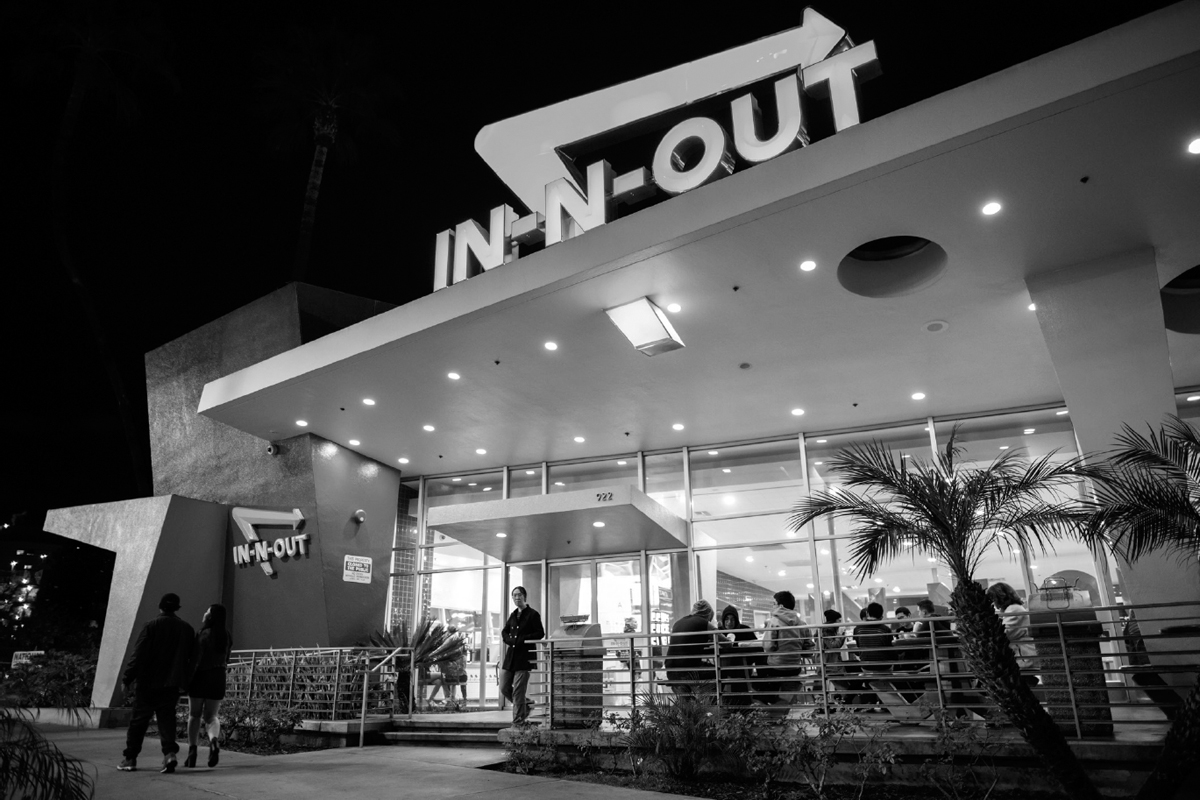
Figure 8.5. In-N-Out Burger shop in Southern California. Photo credit: Michael Gordon | Dreamstime
Red Bull is an Austrian beverage brand and maker of the world's leading energy drink. With its omnichannel marketing campaigns, the brand has become closely associated with extreme sports and physical activity (see Figure 8.6). Red Bull kick-started the energy drink category by leveraging a key consumer insight and accepted consumer belief: highly active people are always searching for an edge and desire something more exciting than drinking a cup of coffee to get more energy.
Figure 8.6. Red Bull rider with Red Bull helmet. Photo credit: Stock Photo Astur/iStock by Getty Images
Your brand positioning will fundamentally determine whether consumers perceive your brand to be different from your competitors. This point of difference in the minds of consumers is what will separate your brand from other offerings that get selected primarily on price.
Rimowa is a one of Europe's leading premium travel luggage brands. The brand occupies a space that intersects the promise of luxury and precision design (see Figure 8.7).
Known for its quality construction and stylish appearance, Rimowa's grooved aluminum luggage has become an iconic design. By comparison, Louis Vuitton is a pure luxury fashion brand, focusing on fashion and heritage instead of precision engineering (see Figure 8.8).
Figure 8.7. Rimowa store window in Elements Shopping Mall, Hong Kong. Photo credit: Tea | Dreamstime

Figure 8.8. Louis Vuitton storefront in Shanghai. Photo credit: Amy Hsu
Persol is a premium Italian eyewear brand that is famous around the world for its stylishly designed sunglasses. The brand occupies the intersection between Italian design and high quality. Persol got its start by making highly functional optics for Italian pilots and sports car drivers. Later, the Italian brand became intertwined with European fashion and pop culture as celebrities began wearing Persols on film sets and in their everyday lives (see Figure 8.9).
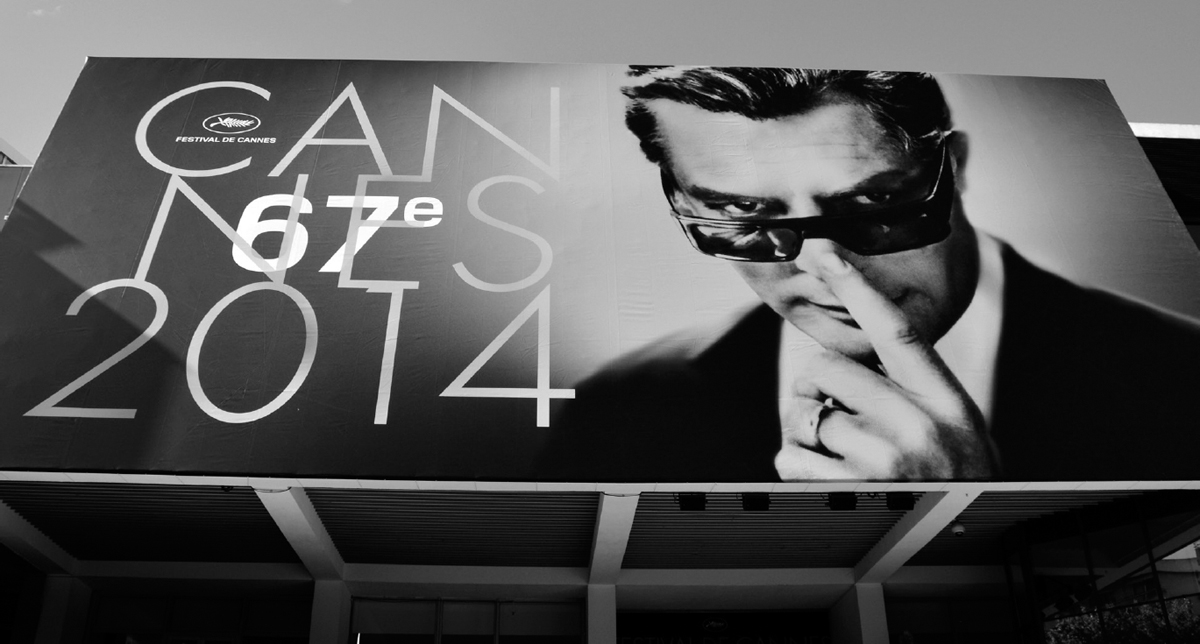
Figure 8.9. Famous Italian actor Marcello Mastroianni wearing Persol sunglasses on a billboard. Photo credit: Arthur R./Shutterstock
Ray-Ban, on the other hand, is the quintessential American sunglass brand that got its start by making glasses for American military pilots and then offered similar designs to the general public. Hollywood thoroughly embraced the all-American positioning. You can see Ray-Ban sunglasses prominently featured in Hollywood movies such as Risky Business, Top Gun, Blues Brothers, and Men in Black, just to name a few. The American image that Ray-Ban promoted even extended into the American White House. President John F. Kennedy loved wearing his Ray-Bans almost anytime he was outdoors (see Figure 8.10).
Figure 8.10. President John F. Kennedy wearing Ray-Bans. Photo credit: Cecil Stoughton. Public Domain White House Photographs. John F. Kennedy Presidential Library and Museum, Boston
Blue Bottle Coffee Company is a “third wave” California coffee roaster and retailer specializing in single origin coffee. During the first coffee wave, the category expanded as consumers responded to the convenience of instant and percolated coffee.6 In the second wave, big chains like Starbucks and Costa made high-quality coffee accessible to the masses7 (see Figure 8.11). Now, in the third wave, there are new offerings like Blue Bottle Coffee Company that focus on unlocking the true flavor of the coffee bean (see Figure 8.12). Founded in 2002, Blue Bottle Coffee Company now operates more than fifty stores in the United States and Asia.
Figure 8.11. Starbucks “We belong together.” Photo credit: AppleZoomZoom/Shutterstock

Figure 8.12. A barista brewing coffee at Blue Bottle. Photo credit: Joshua Rainey | Dreamstime
When a brand promises something, consumers want to know why they should believe the brand will deliver on its promise. These “reasons to believe,” when crafted properly, help reduce barriers to trial and increase loyalty.
Pantene is a global shampoo brand owned by Procter & Gamble that promises consumers beautiful hair that is softer, shinier, smoother, and stronger. The brand tells consumers the reason they can believe it will deliver on its promise is because its products are formulated with Pro-V, a special blend of vitamins and other essential nutrients needed for healthy hair. Pantene often uses a graphic that depicts pro-vitamin bubbles to help reinforce this key reason to believe (see Figure 8.13).
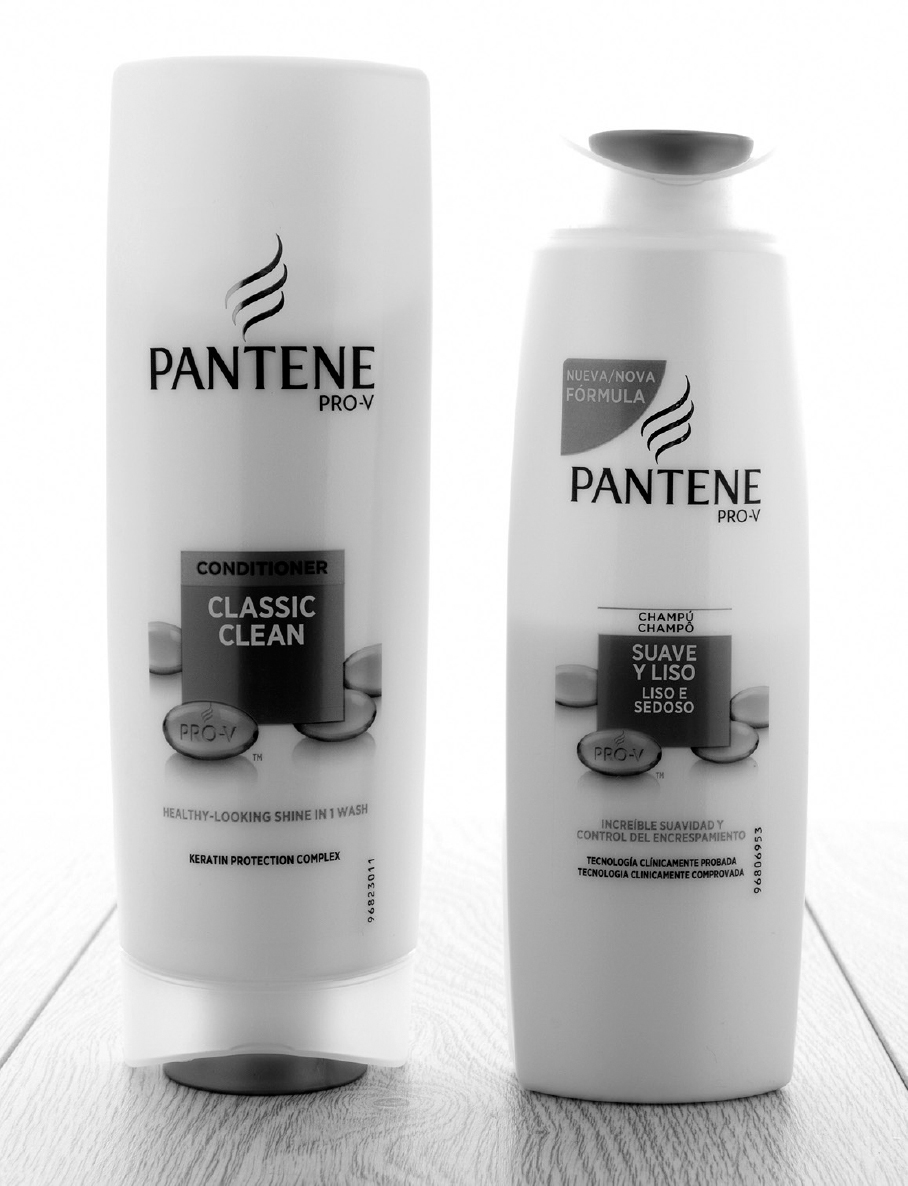
Figure 8.13. Pro-V “Bubble” visual on a shampoo bottle. Photo credit: Mirco Vacca/ Shutterstock
Dyson sales have doubled in the last six years.8 Dyson's newest battery-powered cordless vacuum cleaners are selling extremely well across the world. In fact, its newest models have become the fastest selling vacuums in the company's twenty-five-year history.9 Dyson promises that these new vacuum cleaners have the most powerful suction of any cordless vacuum available on the market. The reason to believe is attributed to Dyson's digital motor (see Figure 8.14). Dyson claims that the “Dyson digital motor spins up to 110,000rpm—five times faster than a Formula One car engine, producing up to 115 Air Watts.”10
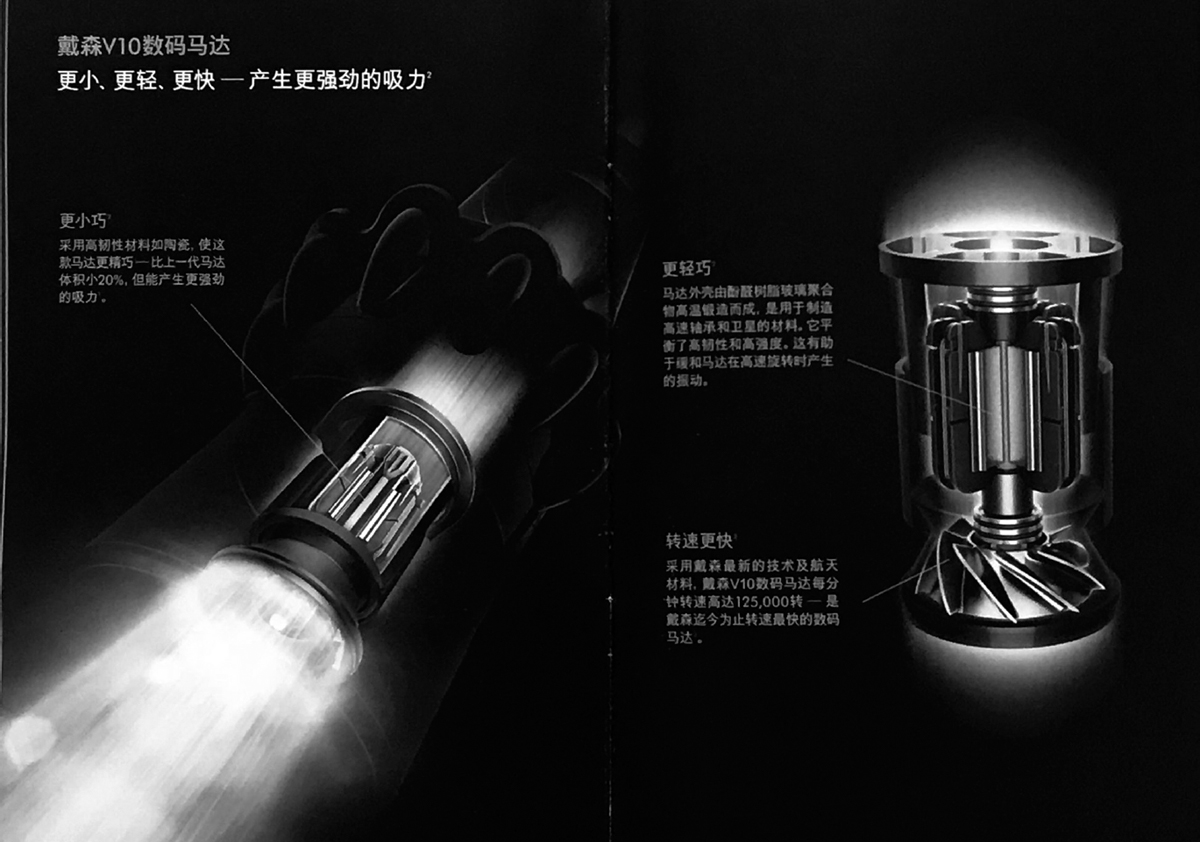
Figure 8.14. An illustration of Dyson's digital motor photographed from the China catalogue. Photo credit: Amy Hsu
Fairlife was launched in 2014 as a premium dairy brand and is distributed by The Coca-Cola Company in the United States. More consumers are starting to take notice of the brand because of its superior health credentials. Fairlife milk sales grew 79 percent in 201611 by promising consumers that its milk is not only delicious, but also has 50 percent more protein, 30 percent more calcium, and half the carbs of regular milk. In addition to that, Fairlife promises that its milk is lactose free (see Figure 8.15).12
The reason to believe that Fairlife can deliver on all of these promises is that the brand uses a proprietary cold, ultra-filtration process that “concentrates the best of milk's natural nutrients, like protein and calcium, while filtering out the lactose and reducing the sugars.”13
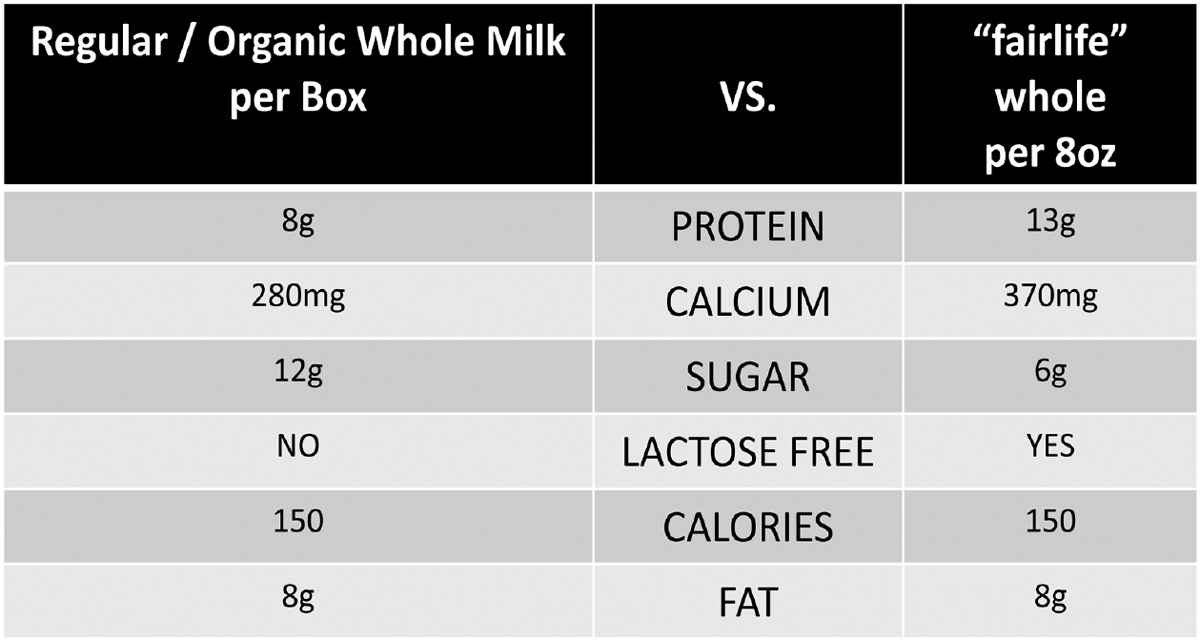
Figure 8.15. Fairlife comparison to whole milk. Photo credit: Keith Homan/Shutterstock
Once your communication strategy is put into place, you can craft a memorable narrative that includes a brand story and supporting mechanics like brand rituals and a “battle cry” to make sure your story is engaging and easy to remember.
Telling a story helps us connect and bond with others. Research shows that we empathize and remember more information when it's conveyed in a story format.14
Think about your own engagement level when information is presented as a list of facts versus when someone tells you a story. Jeremy Donovan, author of How to Deliver a TED Talk teaches people how to give presentations and writes, “Every idea worth spreading must be packaged in a story worth telling.”15 One of the reasons that I enjoy watching TED Talks so much is because when good speakers share their stories, it can sometimes feel like you are right there in the story with them.
It turns out that our preference for hearing stories is hardwired into our brains and the result of our human evolution. Before humans could write, we told each other stories to convey important information and make sure our messages would be remembered.
A study at Princeton University found that when we hear well-crafted stories, our brains react as if we were actually participating in the story. This is also true for the storyteller.16 When researchers studied MRI scans of people telling and listening to stories, they found that brain activity for both recipients and presenters mirrored each other, helping to explain that magical feeling of connection that can happen when you are listening to a good story.17
Brand stories are so important, which is why brand builders need guidance on how to craft a good one. Whenever I coach brand managers on how to write an engaging narrative, I encourage them to use the following framework to evaluate a story based on its ability to meet the following three critical objectives: 1) break through the noise; 2) sustain interest; and 3) generate empathy (see Figure 8.16).
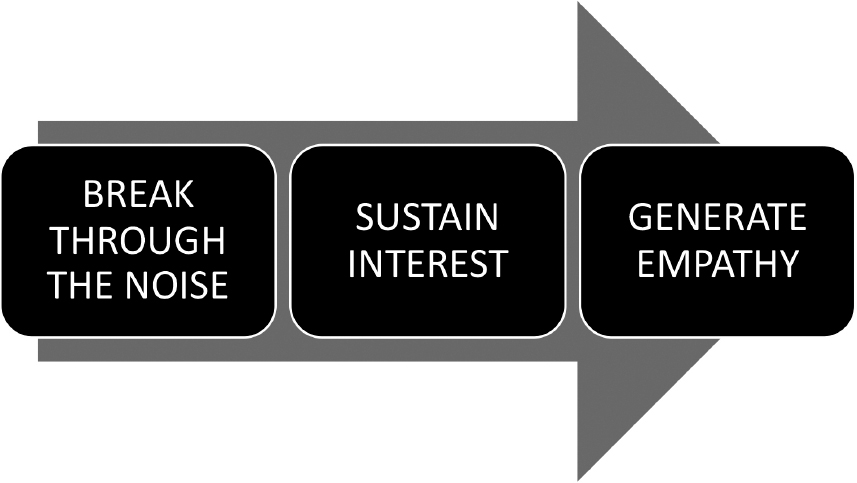
Figure 8.16. Brand story framework.
Consumers and stakeholders also become more engaged with a story when they believe a brand truly understands them. Consumers want to trust that a brand knows what it feels like to walk in their shoes. In fact, research shows that empathy is very important for stakeholders. Eighty-two percent of employees believe that empathy is a key way to influence.19
While traveling in Argentina in 2006, TOMS founder Blake Mycoskie witnessed the hardships faced by children growing up without shoes. Wanting to help, he created TOMS Shoes.
TOMS is a for-profit brand, headquartered in California. The company is known around the world for its One for One business model in which it gives a pair of free shoes to a child in need for every pair of shoes sold in retail.20 TOMS brand story instantly grabs the listener's attention and begins to encourage empathy by focusing on children from developing countries who can't afford to wear shoes. The story feels authentic, and on its web-site, the brand includes pictures of its founder, Blake Mycoskie, giving shoes away to poor children in Argentina (see Figure 8.17).
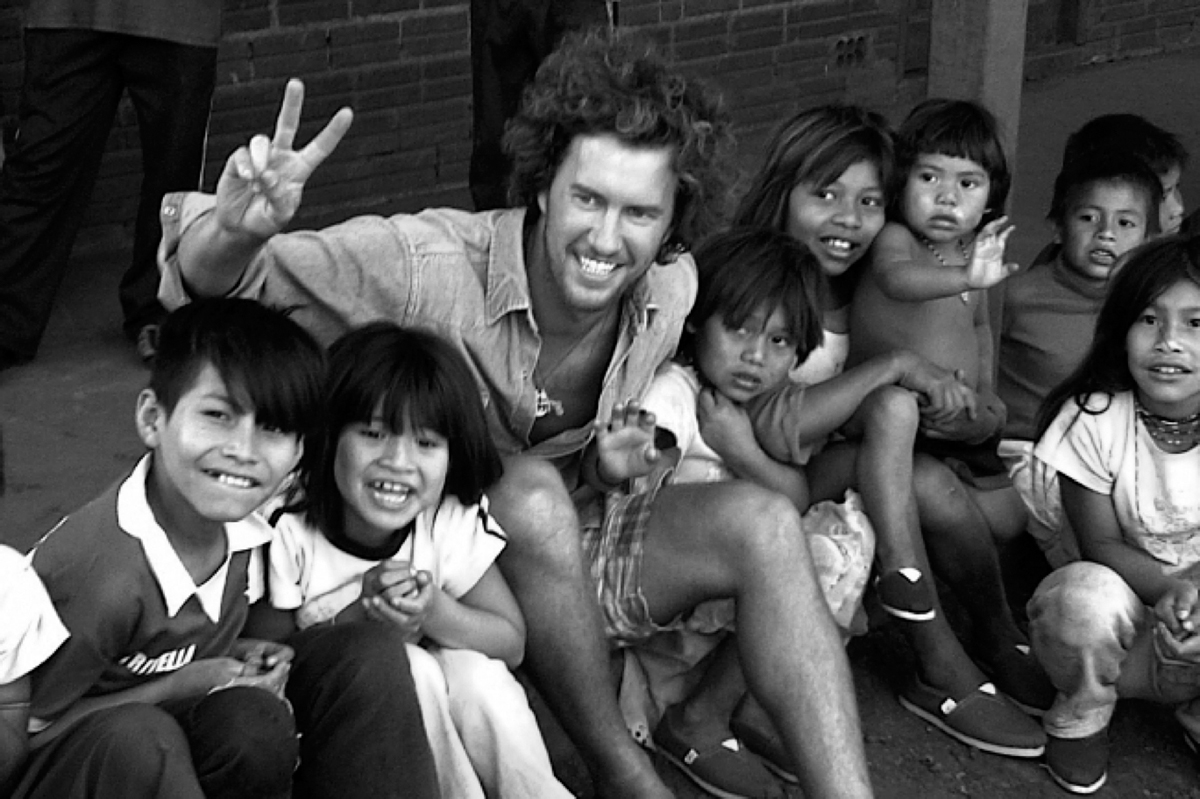
Figure 8.17. TOMS founder Blake Mycoskie. Photo credit: Andy Sternberg
Burt and Roxanne hit it off. From those first candles to the iconic beeswax lip balm we all know today, Burt's Bees has stayed true to a very simple idea: what you put on your body should be made from the best nature has to offer.21
Burt's Bees is an American brand that helped pioneer natural personal care and embraced the concept of sustainability before the word was commonly used (see Figure 8.18).22 The Burt's Bees brand story does a great job of creating and sustaining interest by sharing the true but surprising story about how a large brand got its humble start. The brand's website incorporates old photographs of the founders, which reinforces the brand's positioning by reminding people of a time when things were simpler and more natural.
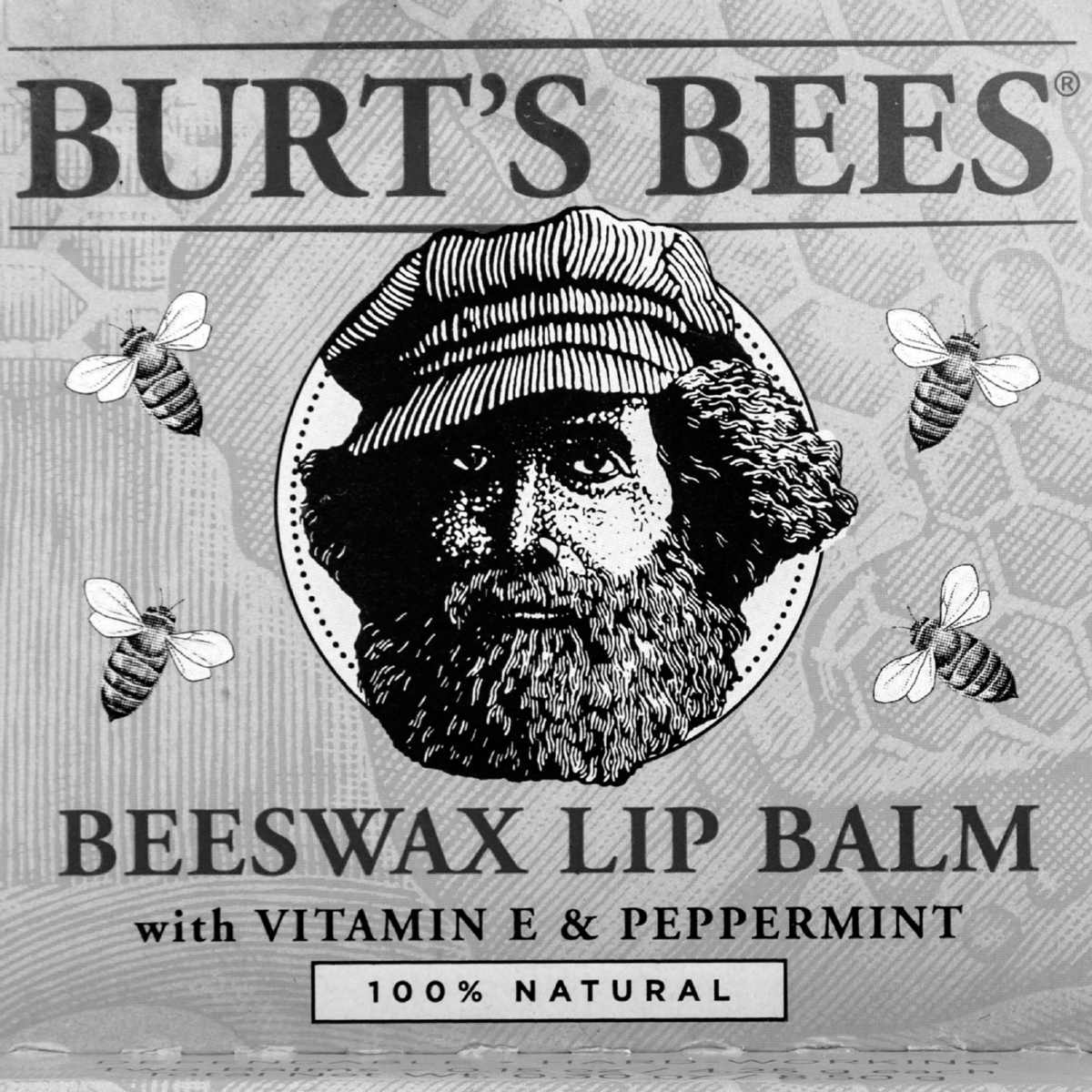
Figure 8.18. An example of Burt's Bees packaging. Photo credit: Keith Homan/Shutterstock
“CLIF Bar is named after my father, Clifford, my childhood hero . . . the inspiration to create an energy bar occurred during a 175-mile bike ride. We'd been gnawing on some other energy bars all day. Suddenly, despite my hunger, I couldn't take another bite. I thought, ‘I could make a better bar than this!’”23
CLIF Bar is an American health and lifestyle brand that began as an alternative to traditional energy bars. The brand now sells more than a dozen product lines and exports to eighteen different countries throughout Europe, Asia, and Australia.24 The CLIF bar brand story starts with an emotional punch as Gary (the founder) discusses his relationship with his father, whom he calls his hero. Then the story introduces the moment when Gary had his epiphany that inspired all his work. Gary takes the listener on a journey from his garage to creating a better-tasting energy bar out of his mom's kitchen. The brand's website includes a great picture of Gary and his dad, which helps communicate the brand's authenticity and facilitates message recall.
John Walker's father had just died. No time to grieve. There was a living to be made. John had a genius for whisky. Most grocers stocked single malts, but they were never consistent. This wasn't good enough for John, who started blending them together so his whisky tasted just as good every time.25
Johnnie Walker is the most widely distributed blended Scotch Whisky in the world, sold in over two hundred countries.26 The Johnnie Walker brand story is made more powerful by creating synergy between the brand's “Striding Man” logo and battle cry “Keep Walking.”
According to Diageo, the logo and battle cry both communicate the concept of marching forward toward progress and the fulfillment of personal goals (see Figure 8.19 on the following page).27 You can feel this concept come to life in the brand story.
Figure 8.19. Johnnie Walker whisky Striding Man monument statue. Photo credit: Boreccy | Dreamstime
The brand story immediately gets your attention with a death and then sustains it by creating suspense as the listener waits to hear how John Walker will lift himself up and “Keep Walking.” The brand amplifies this key association by using the “journey” metaphor that originates from the brand story to frame other real stories of achievement from its brand ambassadors and customers, resulting in increased engagement and loyalty for the brand.
I often hear people complain about how the news media only speaks in sound bites, making it difficult to comprehend the complete story. That may be true, but in international marketing, well-crafted sound bites are not only needed, they are also highly effective.
I know it is a cliché, but things too often get lost in translation—even between people who speak the same language. Creating brand communication in a “sound bite” format forces the writer to crystalize the brand message. Then, stakeholders can take those “golden nuggets” and integrate them into their conversations with the wider brand community.
The collection of sound bites that you provide to your sales team and other stakeholders should not be limited to product performance. Brands are continuously renovating and improving, so precise performance claims need to be constantly updated. However, the heart of your brand and its reason for being should remain consistent over time.
Battle cries like Johnnie Walker's “Keep Walking” can evoke real emotion and inspire stakeholders to take action. In business, as in war, battle cries can have a unifying effect, which provide an encapsulation of a brand's ethos and act as a compass that guides the team in a common direction and informs customers of what they can expect.
When I worked on the DaVinci Gourmet brand, I led the creation of the battle cry “Flavor Genius.” It is very effective because the “cry” is connected to the actual inspiration for the brand, Leonardo da Vinci, who was a genius. The slogan also encapsulates the brand's promise of helping professional drink makers create their own drink masterpieces.
The phrase is very popular within the extended brand community. It became a unifying mechanism among a group of diverse brand stakeholders due to its simplicity and how it applies to both the brand's expertise and the customers who aspire to be flavor geniuses (see Figure 8.20).
Powerful battle cries have the following elements:
The following examples are extremely powerful battle cries from two of the world's most successful brands.
Figure 8.20. DaVinci Gourmet website landing page. Source: DaVinci Gourmet, used with permission
Walmart is the world's largest retail chain, hiring roughly 2.3 million workers in more than eleven thousand stores across twenty-eight countries.28 Judith McKenna, the CEO of Walmart International, says you can ask any of her associates why Walmart exists, and they should be able to recite the company's battle cry, “We save people money, so they can live better.”29 It's a simplified version of the company's mission statement and also shows up in the brand's advertising slogan, “Save Money. Live Better.” (see Figure 8.21).
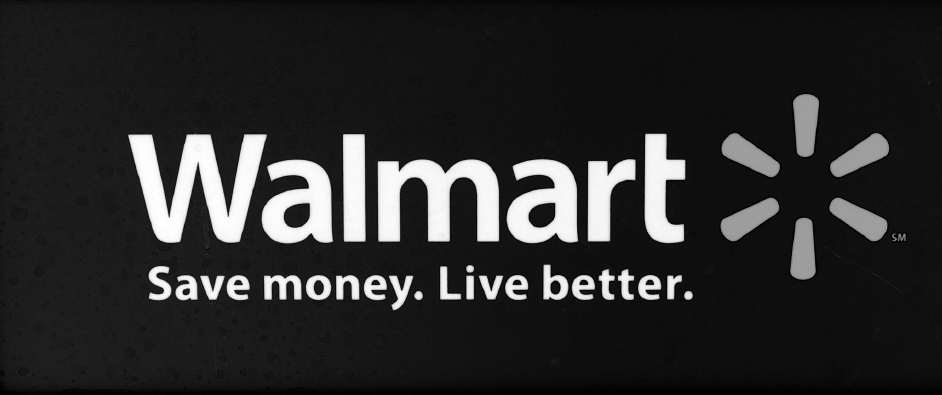
Figure 8.21. Walmart sign with simplified version of the company battle cry. Photo credit: Snyfer | Dreamstime
The company's battle cry is not only easy to remember and understand, but it also captures the driving force behind everything that Walmart does and asks employees and stakeholders to do for the greater good. It evokes real emotion, in part, because it is based on what Sam Walton, the company's founder, actually believed. Sam famously said, “If we work together, we'll lower the cost of living for everyone . . . we'll give the world an opportunity to see what it's like to save and have a better life.”30
In 1997, Apple launched its “Think Different” slogan and campaign. As Steve Jobs was introducing the new campaign to a group of Apple employees, he spoke about how the campaign captured what Apple stood for and how the brand fit into the world. This is how he described Apple's core value:
What we're about isn't making boxes for people to get their jobs done, though we do that well. We do that better than almost anybody in some cases. But Apple's about something more than that: Apple, at the core, its core value, is we believe that people with passion can change the world for the better. That's what we believe.31
The Think Different advertising campaign was launched with a television ad called “Here's to the Crazy Ones,” featuring an impressive collection of creative visionaries, such as Albert Einstein, Bob Dylan, Martin Luther King, John Lennon, Thomas Edison, Muhammad Ali, Gandhi, Alfred Hitchcock, and Pablo Picasso. Black-and-white images of the visionary thinkers were shown and a manifesto was read by actor Richard Dreyfuss:
Here's to the crazy ones. The misfits. The rebels. The troublemakers. The round pegs in the square holes. The ones who see things differently. They're not fond of rules. And they have no respect for the status quo. You can quote them, disagree with them, glorify or vilify them. About the only thing you can't do is ignore them. Because they change things. They invent. They imagine. They heal. They explore. They create. They inspire. They push the human race forward. Maybe they have to be crazy. How else can you stare at an empty canvas and see a work of art? Or sit in silence and hear a song that's never been written? Or gaze at a red planet and see a laboratory on wheels? We make tools for these kinds of people. While some see them as the crazy ones, we see genius. Because the people who are crazy enough to think they can change the world, are the ones who do.32
Images of the visionary thinkers were also used in print and outdoor media to reinforce the message (see Figure 8.22).
“Think Different” went on to become a battle cry for Apple that was still used twenty years later. It is simple and easy to remember, and inspires people inside and outside the company, while communicating Apple's reason for being. Steve Jobs said, “Think Different represented what the brand was all about and touched the soul of the company.”33
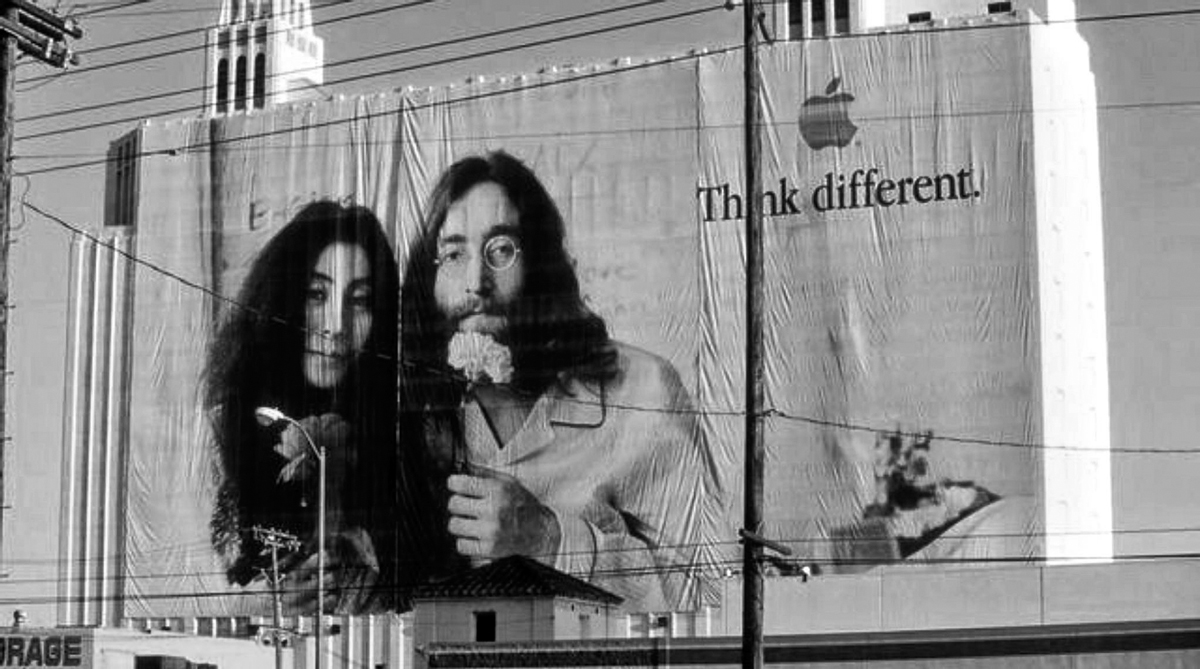
Figure 8.22. Apple “Think Different” billboard advertisement. Photo credit: Gilles Mingasson/Getty Images
Japanese culture is well known for the importance placed on rituals. Ancient ninjas practiced a ritual made up of nine hand gestures called Kuji-Kiri (see Figure 8.23). These gestures were used to help them focus energy and, in some cases, inspire enlightenment. Kuji-Kiri worked by helping a ninja focus on a set of ideas and concepts stored in memory, giving him the spiritual and psychological tools to accomplish a mission.34

Figure 8.23. Kuji-Kiri hand ritual gestures. Source: John 062
Rituals also help global brands expanding into new markets by
Research shows that people enjoy performing a task more when it's combined with a ritual. In fact, when people perform a ritual, they become more invested and, as a result, feel better regardless of the outcome.35
Brands like Oreo cookies and Reese's peanut butter cups have long known that rituals can make food taste better, which is why both brands encourage consumers to create their own consumption rituals (see Figures 8.24 and 8.25).
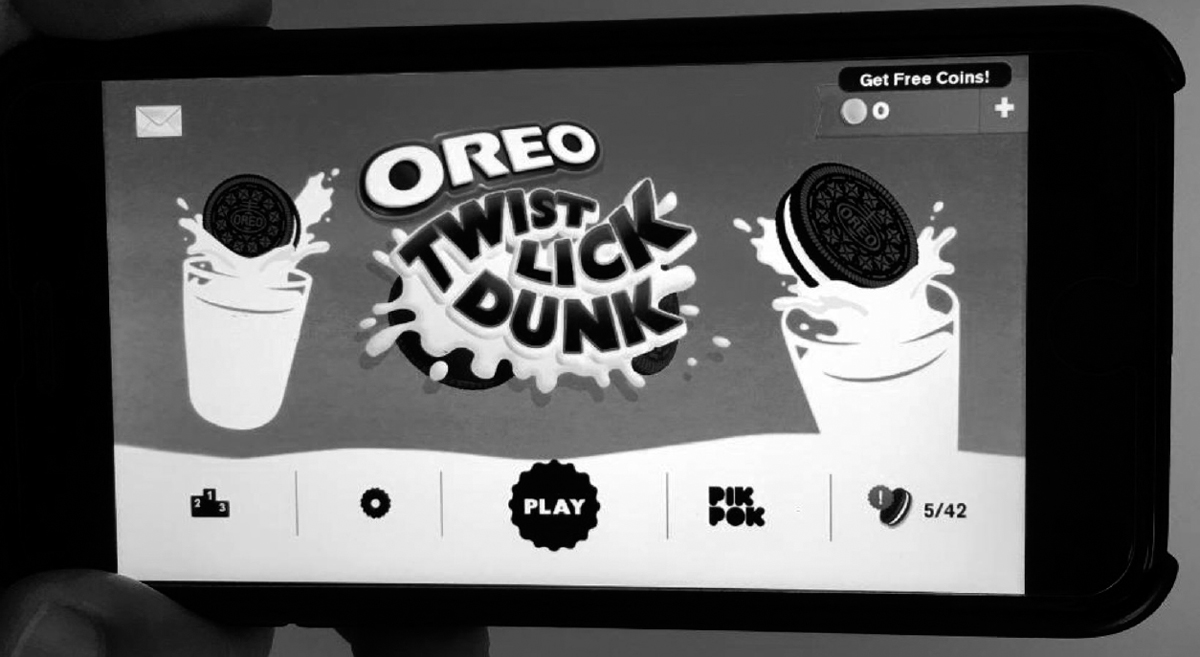
Figure 8.24. Oreo's twist, lick, dunk iPhone app. Photo credit: Amy Hsu

Figure 8.25. How do you eat your Reese's? Photo credit: Amy Hsu
In one research study, respondents were asked to eat a chocolate bar. Half were told to perform a ritual that included breaking and unwrapping the bar in a specific way before eating it. The other half were allowed to eat the chocolate bar anyway they wanted. The results showed that on average, those who performed the ritual enjoyed eating the candy more and also thought the chocolate was worth more.36
Clinique was the first dermatologist-tested brand to be sold globally.37 In 1968, Clinique introduced a simple 3-step skincare ritual with accompanying facial products: Step 1 Cleanse, Step 2 Exfoliate, and Step 3 Moisturize.
When you visit a Clinique cosmetic counter, a consultant will likely encourage you to schedule a free makeover that begins with its famous 3-step skincare ritual (see Figure 8.26). The ritual not only helps standardize the way the brand consultants engage with consumers, but also makes it easier for associates to sell.
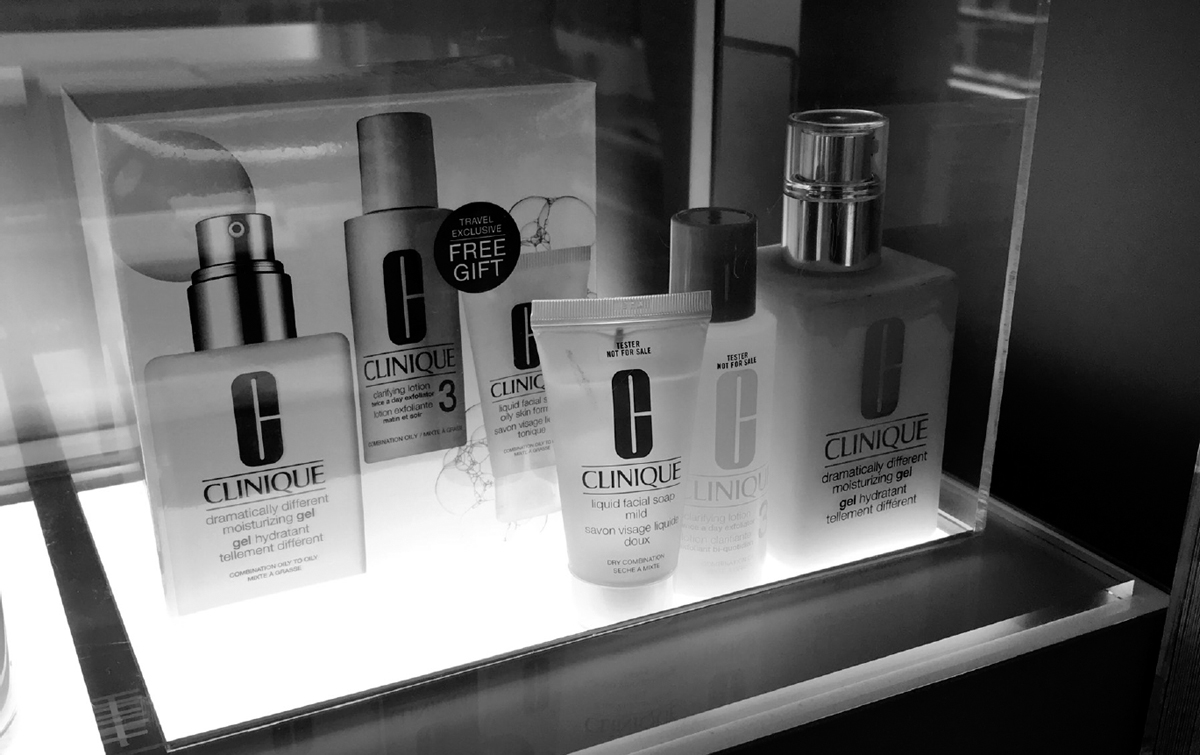
Figure 8.26. Clinique 3-step skincare line display. Photo credit: Amy Hsu
As consumers use the product at home, the 3-step skincare process often becomes a ritual that fans claim they look forward to completing each day, leading to an increase in brand loyalty and a stronger connection with the brand.
That's why Clinique aggressively distributes free samples of its 3-step skincare line at its cosmetic counters all over the world in hopes of having the ritual take hold (see Figure 8.27). Psychological research published in the European Journal of Social Psychology found on average it takes about one and a half months for a ritual to become a habit.38

Figure 8.27. Clinique 3-step free sample sachets. Photo credit: Amy Hsu
Stella Artois is one of the oldest brands in the world, first appearing in 1336.39 The percentage of alcohol content in Stella Artois is 5.2 percent a bit higher than the 4.7 percent average found in other lagers.
In the 1990s, the brand's image was suffering as consumers began to perceive that Stella Artois was the beer of choice for football hooligans and binge drinkers, in part due to its high alcohol content and discount pricing.
In 2008, the brand launched a lower alcohol content lager and used the occasion as an opportunity to refresh the brand's positioning. That's when the brand introduced its famous “9-step pouring ritual” and created a new “glass chalice.” When a bartender follows the 9-step ritual, it ensures the proper skill and precision are used when pouring a pint of Stella Artois (see Figure 8.28).40
To encourage adoption of the ritual in the trade, Stella Artois sponsors Draught Master competitions all over the world during which bartenders get to express their passion for the beer and show off their 9-step pouring ritual.41 Currently, Stella Artois is one of the world's fastest growing beer brands.42
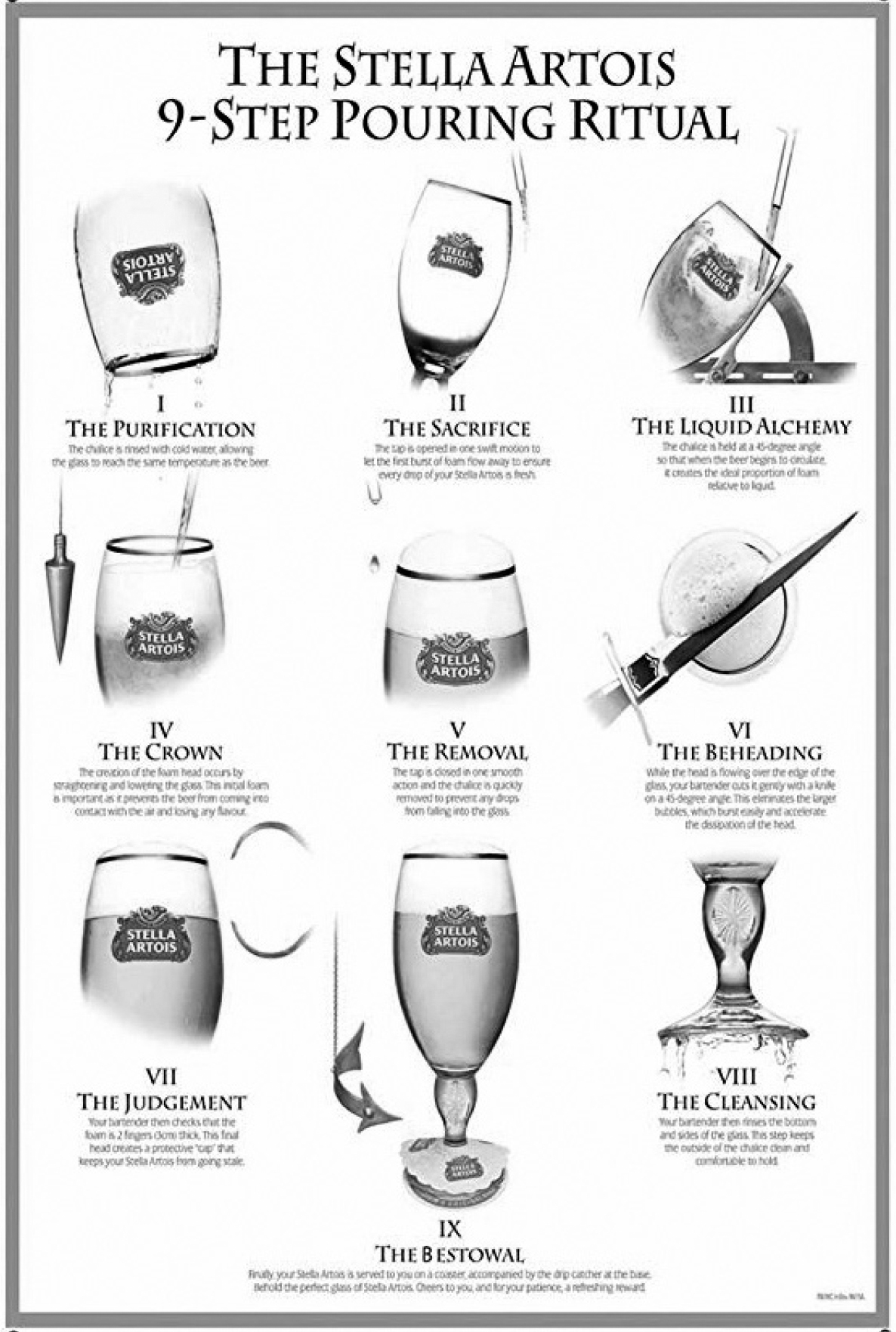
Figure 8.28. Stella Artois 9-step pouring ritual printed on a poster. Photo credit: Rik Thompson
Corona Extra arrived in the United States in 1981 and is now the most popular beer import in America.43 You have probably noticed that anytime you see a Corona in an advertisement or at a bar, the bottle will almost always have a lime wedge stuck into the neck. There are many stories for how this ritual came about. Some people swear that the ritual began as a way to sanitize the opening of Corona's not-so-clean-looking recycled beer bottles that came from Mexico, or that the lime was used to repel flies. I find the most credible reason is that American consumers enjoyed performing the ritual and believed that it made their beers taste better.
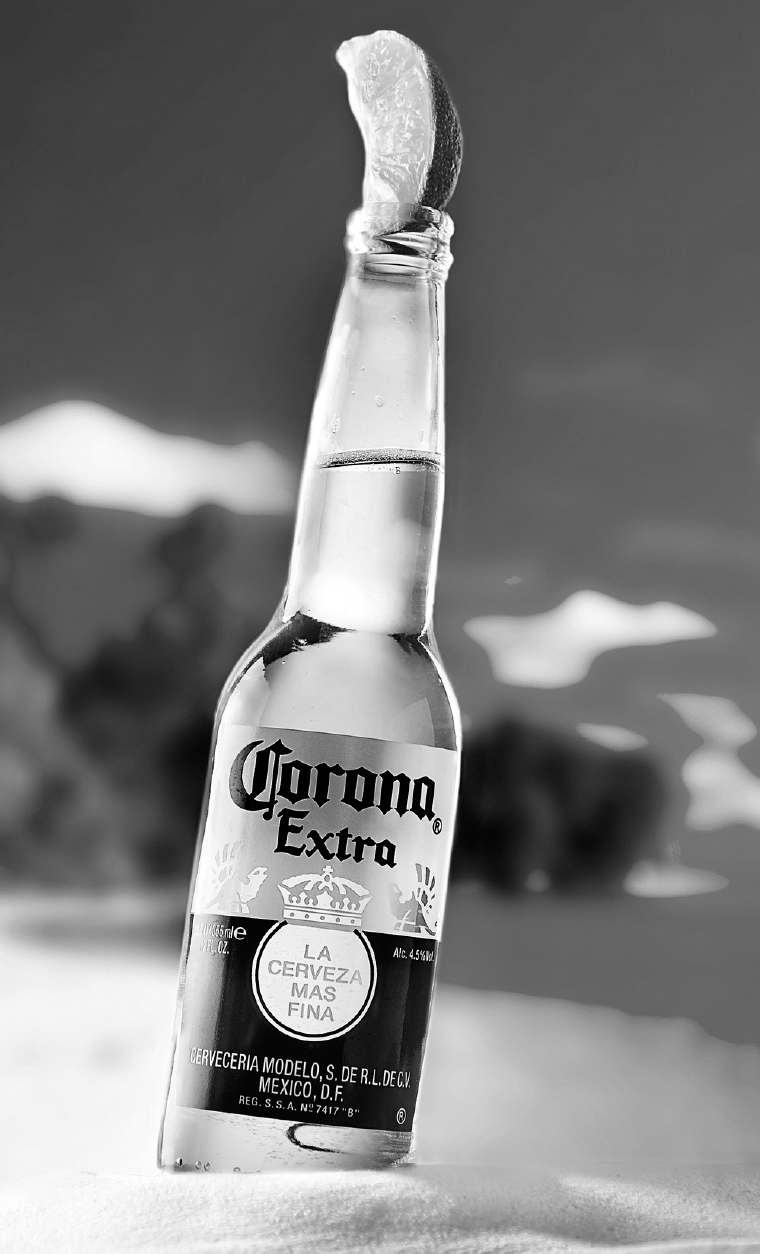
Figure 8.29. Corona advertisement. Photo credit by venge.mail.ua/Depositphotos
It is said that when Grupo Modelo, the producer of Corona Extra, began noticing that Americans were shoving lime wedges into their Corona bottles, the company was not actually happy about it. The American habit was making the bottles more difficult to recycle and increasing costs. However, when the company realized how much sales were being generated as a result of the ritual, it not only accepted it, but began promoting Coronas with limes in all of the brand communication (see Figure 8.29 on page 233).44 This ritual is generally credited with helping Corona overtake Heineken as the bestselling imported beer in the US market.45
As Peter Drucker said, “Strategy is a commodity, execution is an art.”46 So for us global brand builders, it all comes down to execution. If your stakeholders cannot bring your brand positioning and value proposition to life on the ground, your brand will never become relevant to consumers. To bring the brand to life, stakeholders require a clear understanding of the brand, what's in and what's out, what elements of the brand strategy can be adapted, and which must remain constant.
The best global brand builders I know create digital toolkits designed to meet the needs of lead markets and their corresponding satellite cities. A brand toolkit should include style guides, adaptable media templates, “springboard” content, sales/training materials, and approved brand assets and visuals. The materials should all be placed on a digital cloud platform that can be easily accessed by local stakeholders and then customized to satisfy local audiences.
Danone uses the digital toolkit approach to help manage the differences in consumer needs between international markets. Global marketing teams create brand frameworks and global strategies that local markets can then adapt to meet local needs. Olivia Sanchez, vice president of marketing for Evian at Danone, says these toolkits ensure “the look and feel. What the local markets provide is the context and they ensure that it's appropriate for each market.”47
Fifty-seven percent of Unilever's sales are derived from emerging markets.48 In 2013, Unilever began testing a digital content management system with Percolate, a global content marketing platform. The system included an image editor and a media management solution to help the company's central marketing team increase the visual quality and consistency of its local execution.
As a result of using this platform, Unilever was able to enforce stronger brand guidelines and increase efficiencies that resulted in less time spent on creating and approving content while decreasing the cost of content creation. Unilever and Percolate estimate that using this platform generates an annual savings of more than $10 million.49
Coca-Cola uses a centralized structure to guide content creation and execution at the local market level. Coca-Cola's social media hub is located in Atlanta, Georgia, and supports a network of more than twenty regional information centers globally. The network manages social media marketing for Coca-Cola's trademarked brands, supporting more than two thousand global marketers around the world.50
The social media hub is staffed by more than fifty-five people, including marketing and agency partners who are listening to and analyzing social conversations from around the world. These experts take what they are hearing and use it to develop content strategy, media content, and manage online communities and media buys.51 The hub is also responsible for creating digital toolkits that contain adaptable content for specific sales channels.
For example, to increase consumer engagement for its Freestyle dispenser on Facebook, Instagram, and Twitter, Coca-Cola created a foodservice channel toolkit. The toolkit contains “copy and imagery examples for promotions, specialty drinks, time-sensitive content, limited-time offers, mixing ideas, and restaurant openings. It also includes insights on optimizing post visibility (making sure your posts get seen) and responsive messaging (replying to customers who comment on your posts), as well as links to share with followers and instructions for accessing Coca-Cola Freestyle logos and imagery” so foodservice operators can create fun, engaging content easily.52